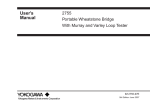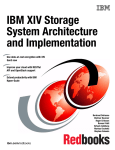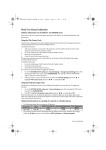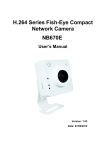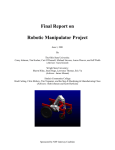Download Arctic AMR SW User Manual
Transcript
Arctic AMR SW User Manual Arctic AMR SW User Manual (2170) Firmware Version 1.2 Document Version 1.2 March 2011 User Manual Arctic AMR SW User Manual Copyright and Trademark Copyright © 2008-2010, Viola Systems Ltd. All rights to this manual are owned solely by Viola Systems Ltd. (referred elsewhere in this User’s Manual as Viola Systems). All rights reserved. No part of this manual may be transmitted or reproduced in any form or by any means without a prior written permission from Viola Systems. Ethernet™ is a trademark of XEROX Corporation. Windows™ and Internet Explorer™ are trademarks of Microsoft Corporation. Netscape™ is a trademark of Netscape Communications Corporation. All other product names mentioned in this manual are the property of their respective owners, whose rights regarding the trademarks are acknowledged. Viola Systems Ltd. Lemminkäisenkatu 14-18 A FI-20520 Turku Finland E-mail: [email protected] Technical Support Phone: +358 20 1226 226 Fax: +358 20 1226 220 E-mail: [email protected] Internet: http://www.violasystems.com Firmware Version 1.2 2 Document Version 1.2 User Manual Arctic AMR SW User Manual Disclaimer Viola Systems reserves the right to change the technical specifications or functions of its products or to discontinue the manufacture of any of its products or to discontinue the support of any of its products without any written announcement and urges its customers to ensure that the information at their disposal is valid. Viola software and programs are delivered “as is”. The manufacturer does not grant any kind of warranty including guarantees on suitability and applicability to a certain application. Under no circumstance is the manufacturer or the developer of a program responsible for any damage possibly caused by the use of a program. The names of the programs as well as all copyrights relating to the programs are the sole property of Viola Systems. Any transfer, licensing to a third party, leasing, renting, transportation, copying, editing, translating, modifying into another programming language or reverse engineering for any intent is forbidden without the written consent of Viola Systems. Viola Systems has attempted to verify that the information in this manual is correct with regard to the state of products and software on the publication date of the manual. We assume no responsibility for possible errors which may appear in this manual. Information in this manual may change without prior notice from Viola Systems. Firmware Version 1.2 3 Document Version 1.2 User Manual Arctic AMR SW User Manual Declaration of Conformity (according to ISO/IEC Guide 22 and EN 45014) Manufacturer’s Name: Viola Systems Ltd. Manufacturer’s Address: Lemminkäisenkatu 14-18 A FI-20520 Turku Finland declares that this product: Product Name: Arctic AMR conforms to the following standards: EMC: EN 55022 Emission Test (Class A) 1. Radiated Emissions (30-1000MHz) 2. Conducted Emissions (0.15-30MHz) EN 50082-1 Immunity Test 1. IEC 801-3: Radio Frequency Electromagnetic Field 2. IEC 801-2: Electrostatic Discharge 3. IEC 801-4: Fast Transients, AC Power Ports and Signal cables Supplementary Information: “The product complies with the requirements of the Low Voltage Directive 73/23/EEC and EMC directive 89/336/EEC.” Warning! This is a Class A product. In a domestic environment this product may cause radio Interference which may make it necessary for the user to take adequate measures. Manufacturer’s Contact Information: Viola Systems Ltd. Lemminkäisenkatu 14-18 A FI-20520 Turku Finland Phone: +358 20 1226 226 Fax: +358 20 1226 220 Firmware Version 1.2 4 Document Version 1.2 User Manual Arctic AMR SW User Manual Warranty and Safety Instructions Read these safety instructions carefully before using the products mentioned in this manual: Warranty will be void if the product is used in any way in contradiction with the instructions given in this manual or if the product has been tampered with. The devices mentioned in this manual are to be used only according to the instructions described in this manual. Faultless and safe operation of the devices can be guaranteed only if the transport, storage, operation and handling of the devices is appropriate. This also applies to the maintenance of the products. To prevent damage both the product and any terminal devices must always be switched OFF before connecting or disconnecting any cables. It should be ascertained that different devices used have the same ground potential. Before connecting any power cables the output voltage of the power supply should be checked. This product is not fault-tolerant and is not designed, manufactured or intended for use or resale as on-line control equipment or as part of such equipment in any hazardous environment requiring fail- safe performance, such as in the operation of nuclear facilities, aircraft navigation or communication systems, air traffic control, direct life support machines, or weapons systems, in which the failure of Viola Systems manufactured hardware or software could lead directly to death, personal injury, or severe physical or environmental damage. Firmware Version 1.2 5 Document Version 1.2 User Manual Arctic AMR SW User Manual Revisions Date Document Firmware Description of changes Version Version 12/2010 1.0 1.1.0 Manual released 01/2011 1.1 1.x Information on events and commands added. 02/2011 1.2 1.2 Updated for firmware version 1.2 Firmware Version 1.2 6 Document Version 1.2 User Manual Arctic AMR SW User Manual Contents COPYRIGHT AND TRADEMARK ........................................................................................ 2 DISCLAIMER..........................................................................................................................3 DECLARATION OF CONFORMITY...................................................................................... 4 WARRANTY AND SAFETY INSTRUCTIONS.......................................................................5 REVISIONS............................................................................................................................ 6 1. INTRODUCTION............................................................................................................. 10 2. SERIAL CONFIGURATION CONSOLE..........................................................................11 2.1 2.2 2.3 Mandatory device settings.................................................................................................. 11 Remote configuration.......................................................................................................... 13 Diagnostics and device log................................................................................................. 14 3. LEDS................................................................................................................................17 3.1 3.2 3.3 3.4 3.5 3.6 Power...................................................................................................................................17 Run...................................................................................................................................... 17 Signal................................................................................................................................... 17 Network................................................................................................................................17 Meter....................................................................................................................................17 ALL-OK indication................................................................................................................18 4. EVENTS...........................................................................................................................19 4.1 4.2 4.3 4.4 4.5 4.6 4.7 4.8 4.9 4.10 Event Occurred message format........................................................................................ 19 Event Restored message format........................................................................................ 19 Firmware Change message................................................................................................ 19 Outage message................................................................................................................. 20 No meter message..............................................................................................................20 Pinger Failure Occurred and Restored Messages..............................................................20 No SIM message.................................................................................................................20 Tamper message.................................................................................................................20 Conferror message..............................................................................................................20 Noftp message.................................................................................................................... 20 5. METER POLLING........................................................................................................... 21 5.1 5.2 5.3 5.4 Polling configurations.......................................................................................................... 21 Polling process.................................................................................................................... 21 Testing the connection to the ftp servers........................................................................... 23 Delivery retry....................................................................................................................... 25 6. SNTP TIMEKEEPING..................................................................................................... 26 7. PINGER........................................................................................................................... 27 8. FIRMWARE UPGRADES................................................................................................28 8.1 8.2 Configuration file upgrades................................................................................................. 28 SMS upgrades.....................................................................................................................28 9. SMS/THIN-VPN SMSGW COMMANDS......................................................................... 29 9.1 9.2 SMS command format........................................................................................................ 29 SMS get commands............................................................................................................29 Firmware Version 1.2 7 Document Version 1.2 User Manual Arctic AMR SW User Manual 9.3 9.2.1 Get status................................................................................................................29 9.2.2 getswstatus..............................................................................................................29 9.2.3 get firmware............................................................................................................ 29 9.2.4 get siglevel.............................................................................................................. 30 9.2.5 get log [n]................................................................................................................ 30 9.2.6 get hostname.......................................................................................................... 30 9.2.7 get gapn.................................................................................................................. 30 9.2.8 get guser................................................................................................................. 30 9.2.9 get gpass.................................................................................................................30 9.2.10 get configserver.......................................................................................................31 9.2.11 get hwinfo................................................................................................................31 9.2.12 get thinvpnregpassword.......................................................................................... 31 SMS set commands............................................................................................................ 31 9.3.1 set reboot................................................................................................................ 31 9.3.2 set vupdatefw http <ip> <filename> [<username> <password>]............................ 31 9.3.3 set vupdatefw ftp <ip> <filename> <username> <password> [<port> [<passive>]] ..31 9.3.4 set ATxyz................................................................................................................ 31 9.3.5 set VATxyz.............................................................................................................. 31 9.3.6 set fetchconf............................................................................................................32 9.3.7 set forcepoll.............................................................................................................32 9.3.8 set forcehistpoll....................................................................................................... 32 9.3.9 set forcelspoll.......................................................................................................... 32 9.3.10 set hostname...........................................................................................................33 9.3.11 set gapn.................................................................................................................. 33 9.3.12 set guser................................................................................................................. 33 9.3.13 set gpass.................................................................................................................33 9.3.14 set configserver http <ip> [<username> <password>]............................................33 9.3.15 set configserver ftp <ip> <username> <password> [<port> [<passive>]]............... 33 9.3.16 set savesettings...................................................................................................... 33 9.3.17 set loadsettings....................................................................................................... 33 9.3.18 set clearevents........................................................................................................ 33 9.3.19 set thinvpnregpassword <password>......................................................................33 10.THIN-VPN........................................................................................................................ 34 10.1 10.2 10.3 10.4 10.5 Transparent serial port........................................................................................................ 34 SMS compatible command interface.................................................................................. 34 Ping......................................................................................................................................34 Authentication...................................................................................................................... 34 Registration key...................................................................................................................34 11.REMOTE CONFIGURATION FILE................................................................................. 35 11.1 Configuration process..........................................................................................................35 11.2 Syntax.................................................................................................................................. 35 11.3 File format specification...................................................................................................... 35 11.3.1 [primary ftp server].................................................................................................. 35 11.3.2 [secondary ftp server]............................................................................................. 36 11.3.3 [secondary ftp server]............................................................................................. 36 11.3.4 [meter]..................................................................................................................... 36 11.3.5 [instant meter poll].................................................................................................. 39 11.3.6 [historical meter poll]............................................................................................... 40 11.3.7 [loadsurvey meter poll]............................................................................................40 11.3.8 [data]........................................................................................................................40 11.3.9 [configuration server]...............................................................................................42 Firmware Version 1.2 8 Document Version 1.2 User Manual Arctic AMR SW User Manual 11.3.10[sntp]........................................................................................................................ 42 11.3.11[sms]........................................................................................................................ 43 11.3.12[thin-vpn].................................................................................................................. 43 11.3.13[pinger].....................................................................................................................44 11.3.14[events].................................................................................................................... 45 11.3.15[firmware]................................................................................................................. 48 11.3.16[debug].....................................................................................................................49 11.3.17Configuration file example...................................................................................... 49 Firmware Version 1.2 9 Document Version 1.2 User Manual Arctic AMR SW User Manual 1 Introduction This is the user manual for Arctic AMR firmware version 1.2. Firmware Version 1.2 10 Document Version 1.2 User Manual Arctic AMR SW User Manual 2 Serial configuration console The serial port is shared between normal operation (meter communication) and configuration console. By default the serial console is not started; the user is required to interrupt the normal bootup sequence by inputting a special activation string (xxxxxx) to the serial port. To activate the configuration console, a computer running a serial terminal is connected to the serial port with 19200 8N1 serial port settings. The user then holds down the the 'x' key and powers on the Arctic AMR. The Arctic AMR then prints a greeting and asks for the configuration password: Figure 1. Serial console activation The serial console is protected with the password vi0la8. The menu is navigated by pressing the numbers and letters shown on screen. The ESC key can also be pressed to abort the current operation (or move back in the menu structure). Pressing 'l' will load the current settings from flash (discarding all unsaved changes), pressing 's' will save the current settings to flash, pressing 'e' will save current settings and reboot and pressing 'q' will reboot the device without saving the settings. The configuration console has a timeout; when the console has been open for 15 minutes the device is rebooted into normal meter polling mode. 2.1 Mandatory device settings The mandatory device settings are found by entering the Settings sub-menu (by pressing '1'): Firmware Version 1.2 11 Document Version 1.2 User Manual Arctic AMR SW User Manual Figure 2. Settings -Submenu The device host name and SIM/GSM settings are found under the Network settings sub-menu. Figure 3. Network settings submenu These settings must be configured for the device to work. By pressing '0', the current network settings can be reviewed, and finally saved by pressing 's'. After these settings have been configured, the configuration server settings need to be configured by pressing ESC to go back one level in the menu, followed by pressing '2' to enter the Server settings sub-menu: Firmware Version 1.2 12 Document Version 1.2 User Manual Arctic AMR SW User Manual Figure 4. Server Settings Sub-menu The server from where the configuration file is fetched is configured in the Server settings submenu. The following options are available: ■ IP ■ Protocol (FTP or HTTP) ■ FTP settings: ■ server port (if non-standard) ■ passive/active FTP ■ FTP/HTTP user name and password (HTTP also works without authentication, in that case these can be left empty) ■ The Thin-VPN registration password The settings can be reviewed by pressing the '0' key before they are saved by pressing the 's' key. 2.2 Remote configuration After the device settings for the device are correct, the remote configuration will be fetched from the configuration server. The configuration fetch can be triggered manually by entering the Remote configuration sub-menu from the root menu level. At this sub-menu the remote configuration can also be reviewed. Firmware Version 1.2 13 Document Version 1.2 User Manual Arctic AMR SW User Manual Figure 5. Remote configuration sub-menu 2.3 Diagnostics and device log By entering the Device diagnostics from the root menu, various device diagnostic are available: Figure 6. Device diagnostics sub-menu At this level system diagnostic functions are available for problem solving: ■ local device log ■ GSM/GPRS status ■ device time ■ ping command for testing IP connectivity ■ version information (HW/application SW/firmware version, IMEI, serial numbers) Firmware Version 1.2 14 Document Version 1.2 User Manual Arctic AMR SW User Manual Figure 7. Device log The local device log shows information about what has happened on the device (for example if there has been network connectivity problems). The show version function provides SW/HW version information: Firmware Version 1.2 15 Document Version 1.2 User Manual Arctic AMR SW User Manual Figure 8. Device version information Firmware Version 1.2 16 Document Version 1.2 User Manual Arctic AMR SW User Manual 3 LEDs The Arctic AMR has the following LEDs: ■ Power 3.1 ■ Run ■ Signal ■ Network ■ Meter Power The Power LED is directly connected to the power supply and will glow constantly once power is available for the internal microprocessor. Note that the product may operate for several minutes without the AC power connected due to the internal ultra high capacity capacitor required for power outage event communication. 3.2 Run The Run LED has the following operating modes: ■ Off: error situation, application is not running 3.3 ■ Blinks slowly (1/s): device is booting up and allowing the configuration console activation string to be entered ■ Glows constantly: device is running in normal operation mode; configuration console access is not possible Signal The Signal LED has the following operating modes: ■ Off: no or very weak GSM/GPRS signal 3.4 ■ Blinks slowly (1/s): signal level is between weak and normal ■ Glows constantly: signal level is normal or better Network The Network LED has the following operating modes: ■ Off: GPRS network not available 3.5 ■ Blinks slowly (1/s): trying to connect to the GPRS network (SIM initialization, inputting PIN code, waiting for GSM network registration, waiting for GPRS connection, testing FTP server connection) ■ Bursts: GPRS data or SMS activity ■ Glows constantly: GPRS network connection OK Meter The Meter LED has the following operating modes: ■ Off: meter communication (local polling) is not used ■ Blinks slowly (1/s): trying to connect to meter Firmware Version 1.2 17 Document Version 1.2 User Manual Arctic AMR SW User Manual 3.6 ■ Bursts: sending data to meter ■ Glows constantly: meter communication OK ALL-OK indication When all five LEDs glow constantly it indicates that everything is OK (provides easy field installation verification). Firmware Version 1.2 18 Document Version 1.2 User Manual Arctic AMR SW User Manual 4 Events The events can be detected when they occur (e.g. power off outage) and when the situation is restored (power available again). The events are stored to a non-volatile memory and will be erased only when successfully delivered or when all the delivery retries are used up. The events can be delivered by using SMS or FTP. The event message syntax is given below. 4.1 Event Occurred message format The general event occurred message syntax is: oevent=event_name,dev=hostname,otime=hh:mm:ss dd mm yyyy where the event_name is the identification (name) of the event, dev is the hostname of the device and otime is the time when the event occurred. example: oevent=outage,dev=eserv-amr,otime=21:00:36 01:06:2010 4.2 Event Restored message format The general event restoration message syntax is: revent=event_name,dev=hostname,otime=hh:mm:ss dd mm yyyy, rtime=hh:mm:ss dd mm yyyy where the event_name is the identification (name) of the event, dev is the hostname of the device, otime is the time when the event occurred and rtime is the time when the event was detected as restored. Example: revent=outage,dev=eserv-amr,otime=21:00:36 01:06:2010, rtime=21:10:46 01:06:2010 4.3 Firmware Change message The firmware change occuration event contains extra fields after the general message structure: oevent=fwchange,dev=hostname,otime=hh:mm:ss dd mm yyyy,oldfw=version,newfw=version where the extra fields “oldfw” contains the old firmware name and version information whereas the “newfw” contains the new firmware name and version information. Firmware Version 1.2 19 Document Version 1.2 User Manual Arctic AMR SW User Manual 4.4 Outage message The outage occured/restored events contain information about when power outage/power restoration has happened. 4.5 No meter message Meter occured/restored events are generated when the meter is removed/ attached from/to the serial port on the Arctic AMR. 4.6 Pinger Failure Occurred and Restored Messages The pinger failure occuration and restoration messages contain extra fields after the general message structure: oevent=nogprs,dev=hostname,otime=hh:mm:ss dd mm yyyy,sig=siglevel,ber=ber level,gprs=up or down revent=nogprs,dev=hostname,otime=hh:mm:ss dd mm yyyy, rtime=hh:mm:ss dd mm yyyy, sig=siglevel,ber=ber level,gprs=up or down where the extra fields “sig” contains the signal level, “ber” contains the biterror-ratio and “gprs” contains information whether the gprs interface is up or down. 4.7 No SIM message SIM events are sent when the SIM card is removed/inserted. 4.8 Tamper message Tamper events are sent when the tamper status in the meter is triggered. 4.9 Conferror message Conferror events are sent when the remote configuration file on the configuration server contains an error. 4.10 Noftp message Noftp occurred events are sent when there is a problem with the FTP connection (either testing or meter data transfer). Noftp restored events are only sent the next time the meter data transfer succeeds. Firmware Version 1.2 20 Document Version 1.2 User Manual Arctic AMR SW User Manual 5 Meter polling 5.1 Polling configurations The software generates three different measurement data files: ■ instantaneous data ■ historical (billing) data ■ loadsurvey data Each polling mode can be scheduled independently using different scheduling algorithms: ■ interval polling (poll at a configured interval) ■ hourly polling (poll once an hour when minutes are MM) ■ daily polling (poll once a day at a configured HH:MM time) ■ monthly polling (poll once a month at a configured DD:HH:MM time) In addition, each polling mode can be triggered on-demand (by console or SMS). On demand polling does not affect the normal polling schedules. 5.2 Polling process The following illustration shows the overall meter polling process and configuration parameters. Each polling mode (instantaneous, historical and loadsurvey) has its own independent state machine. Firmware Version 1.2 21 Document Version 1.2 User Manual Arctic AMR SW User Manual Figure 9. Overall meter polling process Firmware Version 1.2 22 Document Version 1.2 User Manual Arctic AMR SW User Manual 5.3 Testing the connection to the ftp servers When a polling has been scheduled, the server connection is tested before actually polling the meter. The following illustration shows the decision logic and ftp configuration parameters. Firmware Version 1.2 23 Document Version 1.2 User Manual Arctic AMR SW User Manual Figure 10. Testing the server connection Firmware Version 1.2 24 Document Version 1.2 User Manual Arctic AMR SW User Manual 5.4 Delivery retry When the meter has been polled the actual delivery may fail even if the server connection was tested before polling. For that purpose the file delivery may be retried. The retry interval may be constant (e.g. retry after every 60 seconds) or random-increase (e.g. firstly retry after 0-60 seconds, next retry after 60-120 seconds, next retry after 120-180 seconds). The algorithm, maximum retry count and interval are adjustable parameters. Figure 11. Delivery retry logic Firmware Version 1.2 25 Document Version 1.2 User Manual Arctic AMR SW User Manual 6 SNTP timekeeping The Arctic AMR should be configured to fetch time from remote time servers over the network as it does not contain a battery backed up real-time clock. Before the time is known the device will not do scheduled meter polls as these normally contain timestamped information. The Arctic AMR fetches time using Simple Network Time Protocol (SNTP). SNTP is a simplified version of the Network Time Protocol (NTP) and can use normal NTP servers. If more than one (S)NTP server is specified, the application switches to the next server in the list if problems are encountered. There is an adjustable grace-time for getting the initial SNTP time. If the SNTP query fails the operation continue normally after this grace time has been acquired (even when the time is known to be invalid). Forced polling ignores the SNTP time acquired status. Firmware Version 1.2 26 Document Version 1.2 User Manual Arctic AMR SW User Manual 7 Pinger If the pinger is configured, the Arctic AMR tests IP connectivity to the configured server. If the pinger fails, the GPRS connection will be restarted, and if that does not help the device will be rebooted. Ping interval, timeouts and retries limits can be configured. The ping interval is randomized in the device to avoid ping storms. In addition there is a 5 minute ping grace time after boot. No pinging will occur before the grace time has expired. Firmware Version 1.2 27 Document Version 1.2 User Manual Arctic AMR SW User Manual 8 Firmware upgrades The GPRS link is dropped for few seconds while receiving/sending SMS. So, SMS traffic can be avioded during a firmware upgrade. All meter polling is disabled during upgrades. 8.1 Configuration file upgrades Firmware upgrades are done by specifying a [firmware] section in the remote configuration file. The update server information, file name and version of the new firmware is specified, and then the upgrade will start the next time the configuration file is fetched. The firmware version is also verified every time the device has booted. 8.2 SMS upgrades Firmware upgrades can also be done manually using the set vupdatefw SMS command (see the SMS/Thin-VPN SMSGW commands section for details). Firmware Version 1.2 28 Document Version 1.2 User Manual Arctic AMR SW User Manual 9 SMS/Thin-VPN SMSGW commands The device can be managed used SMS commands. If a Thin-VPN connection is established, the same SMS commands can also be given over a TCP socket. 9.1 SMS command format SMS commands have the format: [<password>#]<get|set>command1[;command2[;command3...]] For example: p4ssw0rd#set reboot 9.2 SMS get commands SMS get commands sends back information from the Arctic AMR. No data on the devices is changed by SMS get commands. 9.2.1 Get status Reply syntax: <hostname>,<gprs status (up or down)>,<ip>,<dns1>,dns2>,<signal (unknown, none, weak, normal, good)>,<signal strength (0-31, 99),<signal ber (0-7, 99)>,<meter link (up or down)> 9.2.2 getswstatus Reply syntax: <uptime>,<last boot reason>,(updating|idle),<number of failed upgrade attempts> 9.2.3 get firmware Reply syntax: <application version>,<application build date>,<Wavecom firmware version> Firmware Version 1.2 29 Document Version 1.2 User Manual Arctic AMR SW User Manual 9.2.4 get siglevel Reply syntax: <signal (unknown, none, weak, normal, good)>,<signal strength (0-31, 99),<signal ber (0-7, 99)> 9.2.5 get log [n] ■ n is the number of messages to use for reply ■ n defaults to 1 if not specified ■ a maximum of 10 messages are sent ■ to save space, log entries received over SMS are not timestamped Reply syntax: <one or more log lines> 9.2.6 get hostname Reply syntax: <hostname> 9.2.7 get gapn Reply syntax: <apn> 9.2.8 get guser Reply syntax: <apn username> 9.2.9 get gpass Reply syntax: <apn password> Firmware Version 1.2 30 Document Version 1.2 User Manual Arctic AMR SW User Manual 9.2.10 get configserver Reply syntax: ftp <ip> <username> <password> <port> [passive|active] or http <ip> <username> <password> 9.2.11 get hwinfo <manufactoring serial>,<manufactoring hw version>,<module imei>,<module serial>,<module version>,<module week/year of production> 9.2.12 get thinvpnregpassword Returns the registration password currently set for Thin-VPN. ■ needs password 9.3 9.3.1 SMS set commands set reboot ■ 9.3.2 Needs password set vupdatefw http <ip> <filename> [<username> <password>] ■ needs password 9.3.3 set vupdatefw ftp <ip> <filename> <username> <password> [<port> [<passive>]] <passive> = true|1|false|0|passive|active ■ 9.3.4 set ATxyz ■ 9.3.5 needs password needs password set VATxyz ■ needs password ■ sends back AT command output (Verbose AT) (waits 5 seconds for output) ■ only sends back what fits in one SMS. Firmware Version 1.2 31 Document Version 1.2 User Manual Arctic AMR SW User Manual Reply syntax: <at command output> 9.3.6 set fetchconf Force immediate fetch of the configuration file from the remote server. 9.3.7 set forcepoll Force immediate instantaneous meter data poll. 9.3.8 set forcehistpoll Force immediate historical meter data poll. 9.3.9 set forcelspoll Force immediate loadsurvey meter data poll. Firmware Version 1.2 32 Document Version 1.2 User Manual Arctic AMR SW User Manual 9.3.10 set hostname ■ 9.3.11 set gapn ■ 9.3.12 needs password set configserver http <ip> [<username> <password>] ■ 9.3.15 needs password set gpass ■ 9.3.14 needs password set guser ■ 9.3.13 needs password needs password set configserver ftp <ip> <username> <password> [<port> [<passive>]] <passive> = true|1|false|0|passive|active ■ 9.3.16 set savesettings ■ 9.3.17 needs password needs password set loadsettings ■ needs password 9.3.18 set clearevents 9.3.19 set thinvpnregpassword <password> Sets a new Thin-VPN registration password. ■ needs password Firmware Version 1.2 33 Document Version 1.2 User Manual Arctic AMR SW User Manual 10 Thin-VPN If configured to use a Thin-VPN server, the Arctic AMR will connect to the Thin-VPN server where it will get it's own IP address. On this socket the server provides a number of services for the Arctic AMR device, including a transparent serial port over TCP and a TCP interface compatible with the SMS commands syntax. The IP address is not directly connected to the device at IP level; for example, FTP data transfers will still be routed using the normal 3G/GPRS IP address. 10.1 Transparent serial port If configured, the transparent serial port is listening as a TCP socket on port 7001 of the device's Thin-VPN IP address. A client may connect to this socket to get raw access to the meter connected to the serial port of the Arctic AMR. The serial settings defined in the [meter] section of the configuration file will be used for the serial port. 10.2 SMS compatible command interface The SMS command compatible interface is available as a TCP socket listening on port 7002 of the device's Thin-VPN IP address. Messages using the same syntax as the SMS commands are accepted, with the addition that each request must be terminated by \n, \r or \r\n and each reply will be terminated by \n. 10.3 Ping It is possible to check IP connectivity by pinging the Thin-VPN IP of a device. Ping packets transferred over Thin-VPN is limited in size to 247 data bytes (255 ICMP data bytes including the 8 byte ICMP header). 10.4 Authentication Thin-VPN uses the Challenge-Handshake Authentication Protocol (CHAP) to authenticate Arctic AMR devices. 10.5 Registration key The first time a Arctic AMR device connects to a Thin-VPN server CHAP authentication is not possible because the server and the device does not have a shared secret. In this case the device uses the pre-configured ThinVPN registration password as the CHAP secret. After the authentication has succeeded, the server sends a new secret to the device (this secret is device specific), and the client removes the registration password from flash. The registration password is a global shared secret for the system, but can only be used to register a device once. Firmware Version 1.2 34 Document Version 1.2 User Manual Arctic AMR SW User Manual 11 Remote configuration file 11.1 Configuration process Arctic AMR fetches the configuration from the configuration server using HTTP or FTP. The file the device fetches is hostname.conf (where hostname is the hostname of the device) from the root directory of the server. After loading a configuration file from the configuration server, the Arctic AMR parses the file. If the file contains an error, the file is rejected and the device is configured using default parameters. Using the verify_eserv_amr_conf.sh tool the configuration file can be verified on the server before it is loaded to the device. 11.2 Syntax The Arctic AMR accepts a INI style configuration file. The file is a text file with the following structure: ■ key=value pairs for specifying configuration parameters ■ [sections] enabling parameter grouping ■ a ; (semicolon) at the beginning of a line marks the entire line as a comment ■ white spaces (spaces, tabs) at the beginning and end of lines are ignored If a key=value pair is missing (or commented out), the Arctic AMR uses its default value for that option. A key must always contain a value, i.e., a line with an empty value (key=) results in an invalid configuration. Simple configuration file example: ; host.conf [primary ftp server] ip=10.9.8.7 username=ftpdata password=secretpassword ;commented out section ;[sntp] ;ip=pool.ntp.org 11.3 11.3.1 File format specification [primary ftp server] ip=<ip or host> ■ both numerical and dns name formats are accepted port=<port> Firmware Version 1.2 35 Document Version 1.2 User Manual Arctic AMR SW User Manual ■ defaults to 21 ■ min 0 ■ max 65535 username=<username> password=<password> passive-mode=true|false ■ 11.3.2 defaults to true [secondary ftp server] Specifies parameters of the seconday ftp server used for storage of meter data. Parameters are the same as for the [primary ftp server] section. 11.3.3 [secondary ftp server] Specifies parameters of the ftp server used for storage of events data. Parameters are the same as for the [primary ftp server] section. 11.3.4 [meter] type=<protocol> ■ possible protocol values: sec_pact, hwell, lt_ir, vpn speed=<speed> ■ possible values: 300-115200 ■ unit: bps ■ defaults to 9600 databits=<bits> ■ possible values: 7,8 ■ defaults to 8 parity=<parity> ■ possible values: N,E,O ■ defaults to N retries=<n> Firmware Version 1.2 36 Document Version 1.2 User Manual Arctic AMR SW User Manual ■ meter polling retry limit ■ integer value ■ defaults to 3 vpn-dual-mode=true|false ■ if enabled, performs normal meter polling (according to type setting) until data is available from the socket, then switches to Thin-VPN transparent serial port mode until no data has been transferred for the time specified by vpn-dual-mode-idle-timeout ■ if the serial port is busy when a client tries to send data over the link, the Arctic AMR responds with a string with the syntax BUSY: <reason>, for example “BUSY: polling instantaneous data” ■ defaults to false vpn-dual-mode-idle-timeout=<seconds> ■ how long the transparent serial Thin-VPN link should be idle before switching back to meter polling mode ■ defaults to 5 maddress=<n> ■ Modbus meter protocol address ■ integer value ■ defaults to 1 password=<password> ■ meter password ■ defaults to empty string ■ max 30 characters timeout=<seconds> ■ meter response timeout (in seconds) ■ defaults to 2 miregstart=<n> Firmware Version 1.2 37 Document Version 1.2 User Manual Arctic AMR SW User Manual ■ Modbus input register start ■ integer value ■ defaults to 0 miregcount=<n> ■ Modubus input register count ■ defaults to 0 ■ min 0 ■ max 30 mhregcount=<n> ■ Modbus Holding Register count (for Honeywell driver) ■ integer value ■ defaults to 10 ■ min 0 ■ max 30 kwhtype=<priority list> ■ kwh energy type priority list ■ a priority list is a ■ list of comma seperated integers ■ ■ a list contains max 5 items defaults to 212,130,134 kvahtype=<priority list> ■ kvah energy type priority list ■ defaults to 216,160 kvarhtype=<priority list> ■ kvarh (combined) energy type priority list ■ defaults to 146 kvarhlgtype=<priority list> Firmware Version 1.2 38 Document Version 1.2 User Manual Arctic AMR SW User Manual ■ kvarh (lag) energy type priority list ■ defaults to 217 kvarhldtype=<priority list> ■ kvarh (lag) energy type priority list ■ defaults to 218 frame-spacing-serial=<x> 11.3.5 ■ if enabled (> 0), the AMR detects end of serial frame when a gap is detected in the serial data coming from meter ■ when meter has been quiet for x milliseconds, a serial frame is detected and is transferred over the Thin-VPN transparent serial port ■ defaults to 0 (disabled) [instant meter poll] poll-mode=disabled|interval|hourly|daily|monthly ■ ■ poll modes: ■ disabled polling is disabled ■ interval poll every poll-interval seconds ■ hourly poll every hour when minutes is poll-hourly-minutes ■ daily poll daily at time specified by poll-daily-time ■ monthly poll monthly at time specified by poll-monthly-time defaults to disabled poll-interval=<interval in seconds> ■ how often the meter is polled and data is transferred to ftp server ■ defaults to 900 for instant polling and 86400 for historical and loadsurvey polling poll-hourly-minutes=<minutes> Firmware Version 1.2 39 Document Version 1.2 User Manual Arctic AMR SW User Manual ■ min 0 ■ max 59 poll-hourly-random-delay=<seconds> ■ defaults to 0 poll-daily-time=<HH:MM> ■ for example: poll-daily-time=23:59 poll-daily-random-delay=<seconds> ■ defaults to 0 poll-monthly-time=<DD:HH:MM> ■ for example: poll-monthly-time=01:00:00 ■ if day is 32, it will use the last day of the month (28, 29, 30 or 31) poll-monthly-random-delay=<seconds> ■ 11.3.6 [historical meter poll] ■ 11.3.7 defaults to 0 accepts same parameters as [instant meter poll] section [loadsurvey meter poll] ■ accepts same parameters as [instant meter poll] section, in addition: days=<days> 11.3.8 ■ meter loadsurvey days to poll ■ 0 == all ■ defaults to 2 [data] discard=newest|oldest Firmware Version 1.2 40 Document Version 1.2 User Manual Arctic AMR SW User Manual ■ what to do when the internal buffers are full of meter data (e.g., due to ftp failures) ■ newest discards newest data ■ oldest discards oldest data ■ defaults to oldest retry-after-outage=true|false ■ restart polling after power outage if the polling/data transfer was interrupted or the poll trigger expired during the outage ■ defaults to true poll-retry-algorithm=constant|random-increase ■ defaults to random-increase poll-retry-count=<count> ■ defaults to 10 poll-retry-interval=<seconds> ■ constant poll algorithm: ■ how long to wait between retries ■ random-increase algorithm: Firmware Version 1.2 41 Document Version 1.2 User Manual Arctic AMR SW User Manual ■ ■ initial interval to wait between retries ■ how much the interval is increased after each failure defaults to 300 seconds (5 minutes) ftp-test-retry-count=<count> ■ defaults to 2 ftp-test-retry-delay=<seconds> ■ defaults to 30 seconds ftp-retry-algorithm=constant|random-increase ■ defaults to random-increase ftp-retry-count=<count> ■ defaults to 5 ftp-retry-interval=<seconds> ■ 11.3.9 defaults to 60 seconds [configuration server] poll-interval=<seconds> 11.3.10 ■ how often the configuration file is read from the configuration server ■ defaults to 900 seconds ■ min 30 seconds ■ max 604800 (1 week) [sntp] ip=<ip or host> ■ one or two ip lines can be specified, the second ip will be used as a backup sntp server poll-interval=<seconds> Firmware Version 1.2 42 Document Version 1.2 User Manual Arctic AMR SW User Manual ■ how often the SNTP server should be polled ■ defaults to 86400 seconds (24h) ■ 0 means that the time is only fetched once at startup, no regular polling is performed ■ min 60 seconds utc-diff=<seconds> ■ seconds to add to SNTP time (which is UTC) ■ defaults to 0 grace-time=<seconds> 11.3.11 ■ 0 disables the grace time (polling is not started until the correct time is received) ■ defaults to 0 seconds [sms] password=<password> ■ sets password for protected SMS commands ■ default is no password recipient=<telephone number> 11.3.12 ■ used as a recipient for asynchronous SMS messages (currently only events) ■ for SMS management the replies are sent to the sender, not to this recipient number [thin-vpn] ip=<ip or host> ■ IP address of Thin-VPN server port=<port> ■ IP port of Thin-VPN server ■ min 0 Firmware Version 1.2 43 Document Version 1.2 User Manual Arctic AMR SW User Manual ■ max 65535 ■ defaults to 10001 idle-timeout=<seconds> ■ reconnects if link is idle this many seconds ■ sends ping packet over Thin-VPN link if it has been idle for about half this time ■ defaults to 600 (10 minutes) extra-ping-interval=<seconds> 11.3.13 ■ regularly sends ping packets over the Thin-VPN link after the configured interval ■ debugging aid; can be set much lower than idle-timeout to keep the link alive without resulting in unwarranted idle disconnects ■ idle-timeout is not affected by this settings ■ defaults to 0 (disabled) [pinger] ip=<ip or host> ■ IP address to ping in order to test IP connectivity interval=<seconds> ■ how often to do ping check ■ actual interval is randomized from configured value ■ defaults to 600 (10 minutes) ■ min 30 ■ max 86400 (24h) timeout=<seconds> ■ ping timeout in seconds (how long to wait for a ping reply) ■ defaults to 10 seconds ■ min 3 ■ max 180 retries=<n> Firmware Version 1.2 44 Document Version 1.2 User Manual Arctic AMR SW User Manual ■ how many times to retry ping before attempt is considered to have failed (=> restart gprs) ■ defaults to 3 ■ min 1 ■ max 20 reset=<n> 11.3.14 ■ how many consequent ping attempts to allow before resetting the device ■ 0 disables reset ■ defaults to 5 ■ min 3 [events] method=sms|ftp|disabled ■ how to deliver events ■ defaults to disabled ■ telephone number configured in [sms] sections is used as SMS recipient retries=<n> ■ how many times to retry delivery in case of delivery failure ■ 0 = retry until successful ■ defaults to 0 timeout=<seconds> ■ how long to wait between delivery attempts in case of delivery failure ■ 0 = retry until successful ■ defaults to 60 retry-algorithm=constant|random-increase ■ defaults to random-increase event-occured-fwchange=yes|no Firmware Version 1.2 45 Document Version 1.2 User Manual Arctic AMR SW User Manual ■ enable/disable occurred event delivery for event fwchange ■ generates an fwchange event when a new firmware version has been installed ■ defaults to yes event-occured-outage=yes|no ■ send event when power outage occurs ■ defaults to no event-restored-outage=yes|no ■ send event when power is restored ■ defaults to no event-restored-time-outage=<seconds> ■ how long the power must be available before generating a outage restored event ■ defaults to 60 event-occured-nometer=yes|no ■ send event when meter not connected ■ defaults to no event-restored-nometer=yes|no ■ send event when meter re-connected ■ defaults to no event-occured-time-nometer=<seconds> ■ how long the meter link must be down to detect nometer event ■ defaults to 3600 s event-occured-nogprs=yes|no ■ send event when pinger fails ■ defaults to no event-restored-nogprs=yes|no Firmware Version 1.2 46 Document Version 1.2 User Manual Arctic AMR SW User Manual ■ send restored event when pinger works again ■ defaults to no event-occured-filter-nogprs=<n> ■ how many consecutive pinger failures before nogprs event is detected ■ defaults to 3 ■ minimum 1 ■ care must be taken that this filter is less or equal to to pinger retries setting, otherwise the event will never happen (this is a know issue which will be fixed in the next firmware version) event-occured-nosim=yes|no ■ enable/disable occured event delivery for event nosim ■ generates a nosim event when sim card is removed ■ defaults to no event-restored-nosim=yes|no ■ enable/disable restored event delivery for event nosim ■ generates a nosim event when sim card is inserted ■ defaults to no event-restored-time-nosim=<seconds> ■ how long the sim card must have been inserted in order to detect the restored event ■ defaults to 120 event-occured-tamper=yes|no ■ defaults to no event-restored-tamper=yes|no ■ defaults to no event-occured-time-tamper=<seconds> Firmware Version 1.2 47 Document Version 1.2 User Manual Arctic AMR SW User Manual ■ how long tamper status must be active before the tamper event is generated ■ defaults to 60 s event-restored-time-tamper=<seconds> ■ how long tamper status must be inactive before the tamper restoration event is generated ■ defaults to 60 s event-occured-conferror=yes|no ■ defaults to no event-restored-conferror=yes|no ■ defaults to no event-occured-noftp=yes|no ■ defaults to no event-restored-noftp=yes|no ■ 11.3.15 defaults to no [firmware] This section is not saved to flash. If the version string is different from the version string of the currently running software, the firmware pointed to by filename is downloaded and installed. ip=<ip or host> protocol=ftp|http ■ defaults to http username=<username> password=<password> Firmware Version 1.2 48 Document Version 1.2 User Manual Arctic AMR SW User Manual passive-mode=true|false ■ defaults to true port=<port> ■ only for ftp filename=<filename string> ■ filename of the firmware image (e.g. arctic_amr-1.2.0-179.erv) version-verify=true|false ■ defaults to true ■ only disable this option if version field is used version=<version string> ■ 11.3.16 optional field if version-verify is true [debug] This section is not saved to flash. If this section is enabled, the device opens up a TCP connection to ip:port. ip=<ip or host> ■ disabled by default (“”) port=<port> 11.3.17 ■ disabled by default (0) ■ min 0 ■ max 65535 Configuration file example ; primary ftp server for measurement data [primary ftp server] ip=112.67.13.23 port=21 passive-mode=true username=meter-data password=sLay332g path=data Firmware Version 1.2 49 Document Version 1.2 User Manual Arctic AMR SW User Manual [secondary ftp server] ip=112.67.13.24 port=21 passive-mode=true username=meter-data password=sLay332g ;path=dir1/dir2 [events ftp server] ip=112.67.13.23 port=21 passive-mode=true username=meter-data password=sa2a93s path=/ [meter] type=sec_pact speed=1200 databits=8 parity=N ;retries=3 ;maddress=1 ;password= ;timeout=2 ;miregstart=0 ;miregcount=0 ;mhregstart=0 ;mhregcount=10 ;kwhtype=212,134,130 ;kvahtype=216,160 ;kvarhtype=146 ;kvarhlgtype=217 ;kvarhldtype=218 ;kwhtype=212,134,130 ;kvahtype=216,160 ;kvarhtype=146 ;kvarhlgtype=217 ;kvarhldtype=218 [instant meter poll] poll-mode=hourly poll-hourly-minutes=17 poll-hourly-random-delay=60 poll-daily-time=14:20 poll-daily-random-delay=120 [historical meter poll] poll-mode=daily poll-interval=900 poll-hourly-minutes=16 poll-hourly-random-delay=60 poll-daily-time=22:20 poll-daily-random-delay=120 Firmware Version 1.2 50 Document Version 1.2 User Manual Arctic AMR SW User Manual [loadsurvey meter poll] poll-mode=disabled poll-interval=120 poll-hourly-minutes=36 poll-hourly-random-delay=60 poll-daily-time=16:21 poll-daily-random-delay=120 [data] discard=oldest poll-retry-algorithm=constant poll-retry-interval=30 ftp-test-retry-delay=10 ftp-retry-algorithm=constant ftp-retry-algorithm=constant ftp-retry-count=2 ftp-retry-interval=10 [configuration server] poll-interval=300 [sntp] ip=ntp.inet.fi ip=pool.ntp.org poll-interval=10800 utc-diff=10800 grace-time=180 [sms] password=qwerty [pinger] ip=212.68.11.232 interval=300 timeout=15 retries=5 ;reset=3 [events] method=ftp timeout=60 retry-algorithm=random-increase event-occured-fwchange=yes event-occured-outage=yes event-restored-outage=yes event-restored-time-outage=120 event-restored-nometer=yes event-occured-time-nometer=30 ;event-occured-nogprs=yes ;event-restored-nogprs=yes ;event-occured-filter-nogprs=1 ;event-occured-nosim=yes ;event-restored-nosim=no ;event-restored-time-nosim=60 [firmware] ip=112.67.13.24 protocol=http filename=eserv_amr-1.0.0-58.erv Firmware Version 1.2 51 Document Version 1.2 User Manual Arctic AMR SW User Manual version=eserv_amr-1.0.0-58 Firmware Version 1.2 52 Document Version 1.2























































